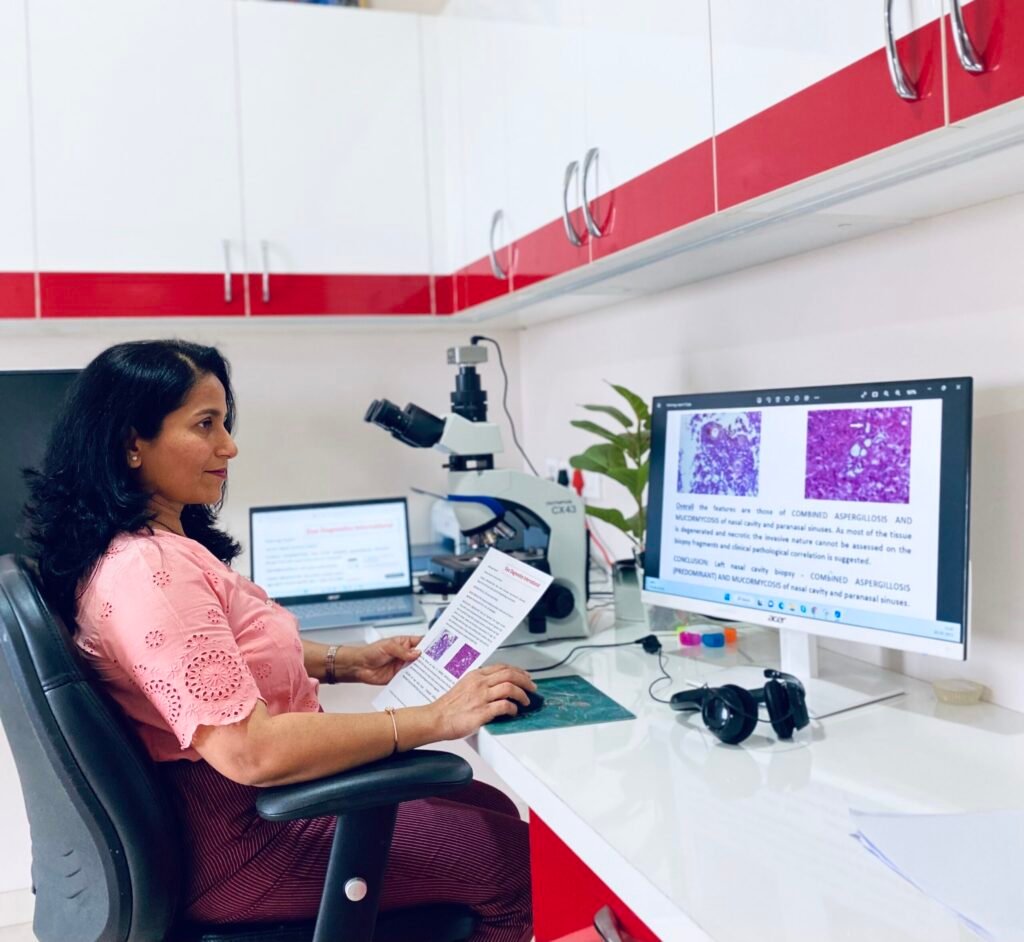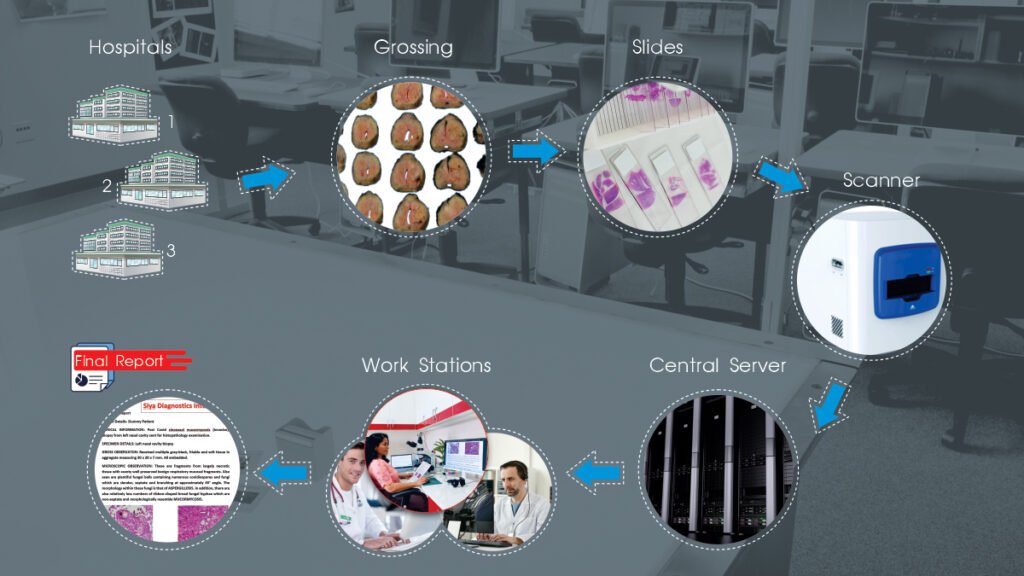HISTOPATHOLOGY & CYTOPATHOLOGY
SERVICES



Here are key process steps we follow in telepathology services:
01. Specimen Generation
Once doctors perform diagnostic or therapeutic surgical procedures on patients, tissue specimens are generated at healthcare facilities such as hospitals or clinics. Occasionally cytology and hematology specimens that are generated at healthcare facility are processed and prepared slides are sent to us for reporting
02. Test request form generation
A detailed test request form filled with patient data, clinical and procedure description duly signed by concerned physicians are kept ready for transportation.
03.Specimen Fixation
Once biopsy or surgical specimens are obtained from a patient, the samples are properly labelled and kept for fixation.
04. Sample Transportation
Tissue specimens in proper fixative media or tissue slides in case of second opinion / cytology / hematology are properly packed, labelled and sent to us for further processing.
05. Grossing
Once the surgical tissue is received it is adequately sampled during grossing & representative tissue is processed for microscopy.
06. Tissue Processing
The tissue undergoes processing, including dehydration, clearing, and embedding in paraffin wax.
07. Tissue Microtomy
Thin sections of the embedded tissue are cut and placed on glass slides.
08. Staining
The tissue sections are stained using various techniques to highlight specific structures and cellular components.
09. Digital Imaging
The prepared slides are scanned to create high-resolution digital images, which may include both macroscopic and microscopic views.
10. Image Transfer
These digital images, along with relevant patient information are securely transmitted to a remote telepathology facility.
11. Data Encryption
To protect patient privacy, data is encrypted during transmission and storage.
12. Image Reception
The telepathologist at the remote facility receives the images and verify their quality and completeness.
13. Image Analysis
The telepathologist examines the digital images, analyzes the tissue structure and cellular feature to make a diagnosis.
14. Diagnostic Report
A comprehensive diagnostic report is generated, including findings, impressions and in some cases recommendations for further studies and treatment.
15. Quality Assurance
The report undergoes a quality control process, which may include peer review, to ensure accuracy and compliance with standards.
16. Report Delivery
The final diagnostic report is securely transmitted back to the referring healthcare provider, enabling them to make informed decisions about patient management and treatment.

Throughout the process, we ensure data security, patient confidentiality and adherence to regulatory guidelines as essential considerations using secured VPN. We maintain effective communication and collaboration between the telepathologists and treating physicians to achieve optimal patient care.
